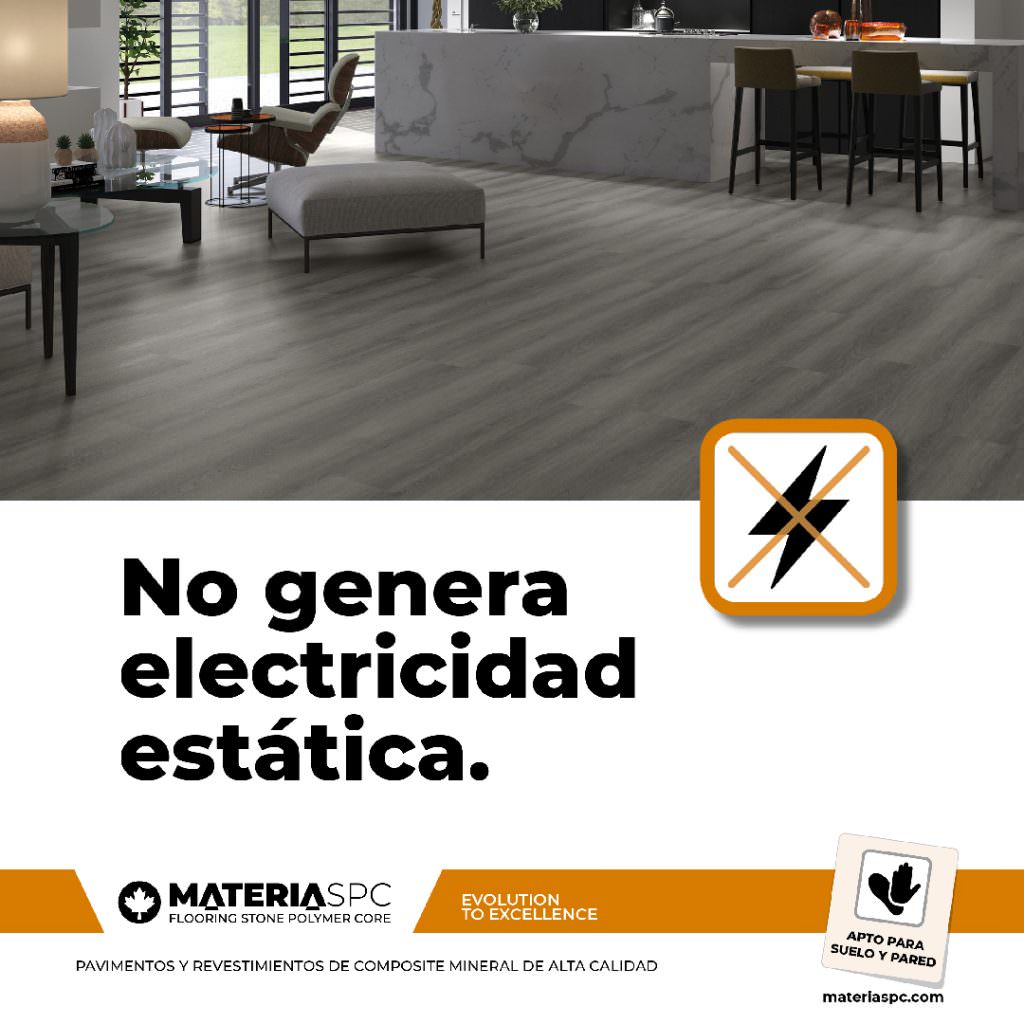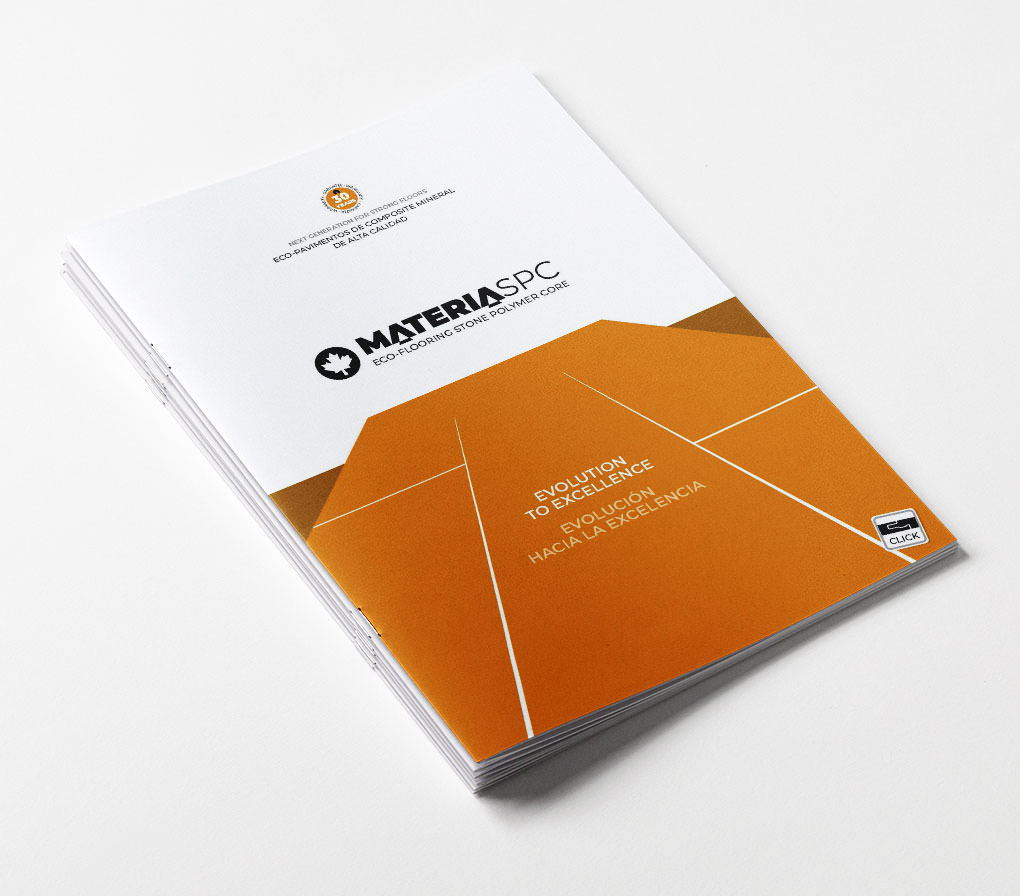Materia SPC complies with the technical requirements of the European standard EN 1815:2016.
Test UNE EN-1815: Assessment of electrostatic charge accumulation propensity / Assessment of static electrical propensity / Évaluation à la propension à l’accumulation de charges électrostatiques. This standard is the official Spanish version of the European Standard EN 1815:2016.
Antistatic flooring standard UNE-EN 1815
At the user level, an antistatic floor is the ideal solution to avoid those sparks when coming into contact with an electronic device or touching another person. However, in order for the floor to be officially recognised as antistatic, it must comply with the UNE-EN 1815 standard, which confirms its antistatic quality.
What must therefore be its electrostatic charge?
The electrostatic load may not exceed 2.0KW.
Advantages of the Materia SPC electrostatic flooring
Choosing an antistatic SPC rigid flooring Materia SPC antistatic also has many other advantages in addition to static charge cancellation.
- Safety and comfort are important features that these will provide.
- Easy to clean: with a damp cloth and neutral soap you will get the most out of the floor, leaving it as good as the first day.
- Easy maintenance: the materials of which the antistatic floor is composed make it much easier to maintain over time, it will not require any special treatment.
- Durability: get more durability for your home or office floor
What is an antistatic floor?
The term “antistatic flooring” refers to a type of flooring designed to control the build-up and discharge of static electricity. Static electricity occurs when there is an imbalance of electrical charges in a material, which can cause damage to sensitive electronic components or even pose a risk of electric shock to people.
Anti-static flooring is designed to dissipate static electricity in a safe and controlled manner, thus preventing damage to equipment and ensuring personal safety. These floors are usually composed of conductive materials or materials with static dissipative properties.

Matter SPC Advantage No static electricity
Types of anti-static flooring
Conductive flooring
Conductive flooring, also known as static conductive flooring, is a type of floor covering specifically designed to dissipate static electricity in a safe and controlled manner. These floors are formulated with conductive materials that allow electric current to flow through them. The main characteristic of conductive soils is their low electrical resistivity, which means that they offer an easy route for static electricity to dissipate to earth. The low resistivity prevents static electricity from building up on the surface and instead dissipates evenly through the soil.
Conductive flooring is used in environments where strict control of static electricity is required to protect electronic equipment, sensitive components or flammable products. Examples of places where conductive floors may be found are laboratories, clean rooms, electronics manufacturing areas and spaces where flammable chemicals are handled. It is important to note that conductive floors must be properly installed and grounded to ensure their effectiveness. In addition, proper maintenance is required to ensure that the soil retains its conductive properties throughout the life of the floor.
Dissipative soils
Also known as electrostatically dissipative flooring (ESD), this is a type of floor covering designed to control and dissipate static electricity in a safe and controlled manner. Unlike conductive soils, dissipative soils have a higher electrical resistivity, which means that they offer a controlled resistance to the flow of electrical current.
The higher resistivity of dissipative soils allows static electricity to dissipate slowly through the soil to earth, preventing dangerous build-ups of static charge. These floors are designed to limit the generation of static electricity and allow for a controlled and safe discharge.
Electrostatically dissipative flooring (ESD)
Electrostatically dissipative flooring (ESD) is a type of floor covering specifically designed to safely control and dissipate static electricity in sensitive environments. These floors are formulated with materials that have the ability to dissipate static electricity in a controlled manner.
ESD soils are characterised by a controlled electrical resistivity in a specific range. The resistivity is designed to allow static electricity to dissipate gradually through the ground to earth, preventing dangerous build-ups of static charge and minimising the risk of damage to sensitive electronic components and equipment.



